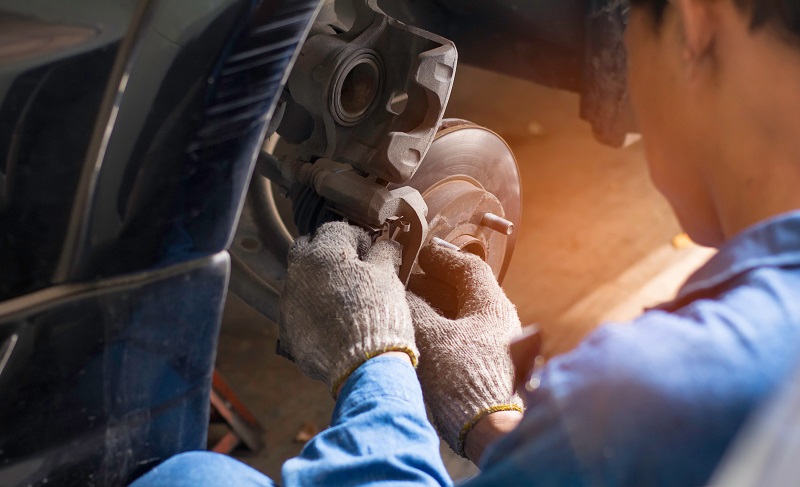
Improving Motivation and Retention of Auto Technicians Boosts the Bottom Line
Keeping employees motivated in the workplace is important in any industry, especially because it’s easier and cheaper to retain employees than to find and train new ones. But it’s particularly vital in the automotive repair sector, which faces an ongoing shortage of technicians who can handle the task of repairing today’s more complicated vehicles. Retiring older workers, unclear career paths, salary issues and tough hours contribute to the shortage.
Compounding the issue, the demand for skilled automotive technicians is rising. There were about 750,000 automotive technicians in 2016, according to the U.S. Bureau of Labor Statistics’ most recent data. But BLS expects demand for auto technicians to reach nearly 800,000 by 2026, a 7 percent increase from current levels.
Staffing shortages at dealerships and repair shops hurt the bottom line. Automotive News estimates a typical auto technician generates $1,000 in gross revenue every work day. That means a position that goes unfilled for 90 days creates a potential loss of $90,000 for that business. Multiply that by several positions and over longer periods of time, and it’s easy to see why employee retention is important.
Luckily, dealerships and repair shop owners that know how to motivate employees can get a leg up on the competition and avoid costly retention issues.
Recognize top performers
The median pay for an auto technician in 2017 was $39,550 a year, according to BLS, and the work is quite labor intensive. Most service technicians work full-time, plus overtime on evenings or weekends. Increased monetary compensation is one obvious way to keep employees motivated in the workplace and reward them for their hard work. Retention requires paying raises and bonuses for good work and high productivity.
Clear employee performance expectations need to be communicated up front so everyone knows how to fairly judge and reward it. Regular employee performance discussions provide an opportunity to offer feedback about what the employee needs to improve upon, and to offer positive feedback on a regular basis which will make your employee feel appreciated.
Appreciation for a job well done doesn’t have to be monetary. Public and private recognition for good work goes a long way to build trust and loyalty and keep employees motivated. Likewise, constructive criticism should be accompanied with positive feedback. Rewards for exceptional work could include tickets to concerts or sporting events, gift cards or an extra day off.
Make employees feel safe
Automotive service technicians and mechanics have one of the highest rates of injuries and illnesses of all occupations, according to BLS. Service technicians must frequently work with heavy parts and tools to complete their daily job duties. On-the-job injuries, such as small cuts, sprains and bruises, are common. Promoting safety in the auto shop by creating a safety culture is another way small business owners can improve retention and keep employees motivated.
- Protective gear: Auto technicians should wear well-fitted clothing or uniforms with long-sleeved shirts and long pants that protect them from cuts, scrapes and burns. They should don protective equipment, such as eye protection, gloves, filtered breathing apparatuses and kneepads. Long hair should be tied back and jewelry should be taken off before working on vehicles and machinery.
- Tidy workstations: Employees should be trained not to leave items, such a toolboxes or equipment, unattended on the floor or in areas that impede foot traffic. Given the nature of the business, any spilled fluids, oils or grease should be cleaned immediately from shop floors to prevent slips, trips and falls. Supervisors should walk the floor regularly and attentively to make sure the floor is clear of hazards.
- Fuel systems: All auto technicians on the shop floor should be notified prior to opening vehicle fuel systems to avoid accidental ignition. Worksites should be non-smoking and tools that create sparks should not be operated while gas fumes are present.
- Machine guarding: Auto technicians often use equipment and machines in repair work and it’s critical they use these tools properly and according to the manufacturer’s directions. Machine guarding should be employed to protect workers according to OSHA standards.
- Lockout/tagout: Lockout/tagout procedures prevent machinery and equipment from accidentally starting up and injuring workers. The Occupational Safety and Health Administration (OSHA) offers its lockout/tagout fact sheet to help employers establish good safety procedures.
- Emergency preparedness: A sufficient number of fire extinguishers should be mounted or kept on-hand at work stations, and they should be kept charged with a visible current inspection tag. Emergency exits should always be clearly marked and unimpeded by equipment or foreign objects. Workers should also know where the electrical shut-off is and how to use it in an emergency.
Turnover is a fact of life in the automotive repair trade, but it doesn’t have to be a continual drag on the business. Recognizing performance and providing a safe work environment can help improve employee retention. Employers who know how to keep employees motivated will be successful operators for years to come.
EMPLOYERS is committed to helping auto dealerships and repair shops operate safer, more efficient work places. Contact EMPLOYERS® today to learn more about our cost-effective workers’ compensation insurance.
The information provided is intended to provide a general overview. This information is not legal advice and should not be relied on as such. EMPLOYERS makes no warranties for the accuracy, adequacy, or completeness of the information provided, and will not be responsible for any actions taken based on the information contained herein. If you have legal questions or need legal advice, please consult an attorney.
